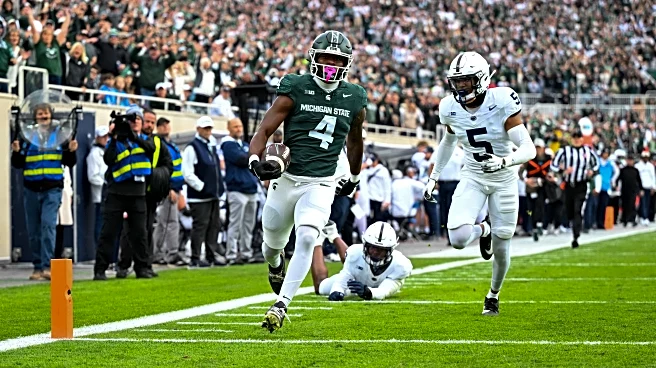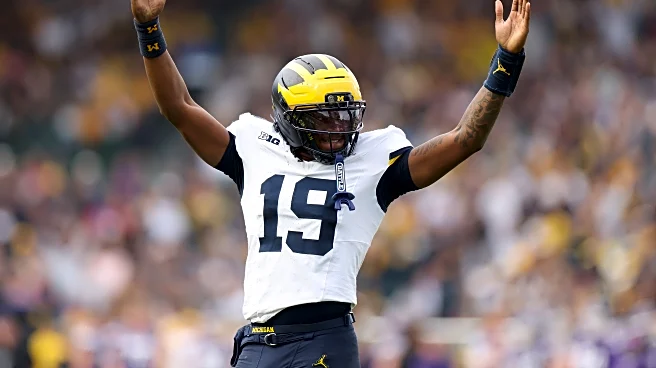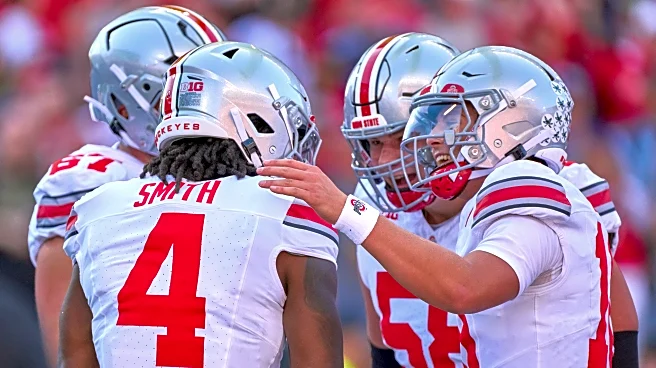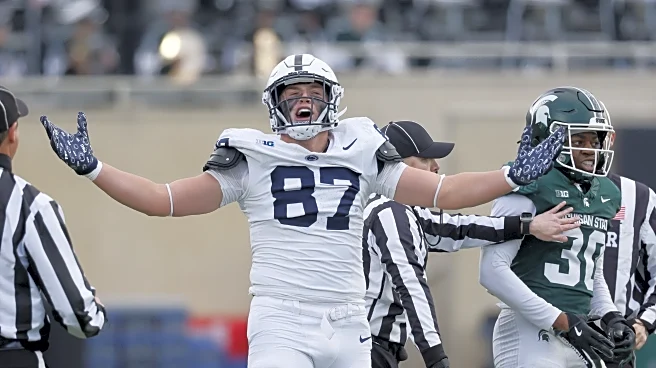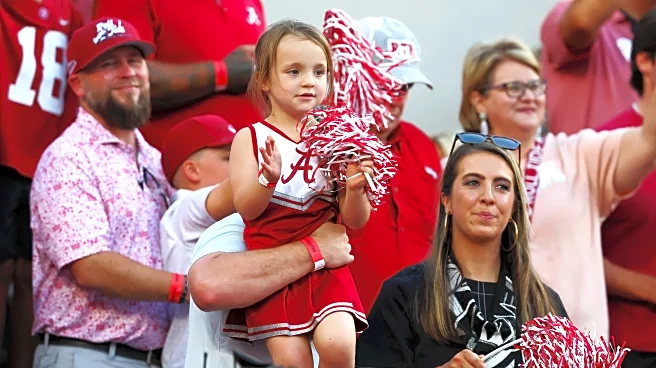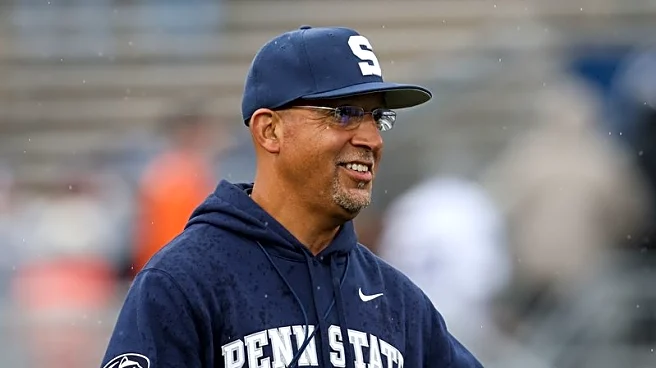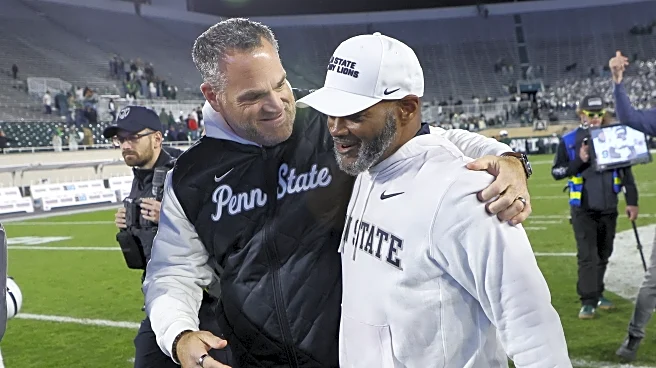The Film Room: Penn State Edition
This past Saturday, your Michigan State Football Spartans lost their 7th straight contest. This also marks 67 days (for those of you reading this article on its’ release date of Wednesday, November 19) since MSU’s last win- the Youngstown State game.
What else was going on back on September 13th? The MLB regular season was still in progress, the Detroit Lions were 0-1, both James Franklin and Dan Mullen still had jobs, and the high temperature in East Lansing was 75℉.
There were no thoughts of NCAA scandals, and the Spartan Stadium crowd proudly chanted choruses of “Aidan Chiles”. What a time. Now, nine and a half weeks later, the chants for Chiles have turned into “Fire Smith”. The fanbase has largely shifted its attention to both basketball and hockey teams. The Breslin Center and Munn Ice Arena are much more attractive tickets than the half-full Spartan Stadium, as the 3-7 football Spartans have found themselves ranked in CBS Sports’ bottom 25 for a second straight week. With all that in mind; if you are still reading through a film review article of another Spartan loss, I truly applaud your loyalty, and slightly question your sanity. Let’s have some fun, shall we?
The Good
Saturday was a classic Jonathan Smith era matchup. MSU came out of the gates looking somewhat competent, and once they took a 10-7 lead, decided to promptly belly-flop to the tune of a 28-10 meltdown. The second half performance of this team in the last two years has been historically bad.
Okay, okay. This is supposed to be a section for positives. In terms of a bright spot, how about tailback Elijah Tau-Tolliver. In State’s last two games, the Sacramento State transfer has recorded 206 yards on 17 carries and a touchdown. This week, his breakaway speed was once again on display during the Spartan offense’s first play from scrimmage.

MSU comes out in an 11-personnel set (1 running back, 1 tight end). Since TE Michael Masunas is lined up to the top of your screen in a three-point stance- on the ball- boundary wideout Omari Kelly is able to align off the ball. This is important, because it allows him to go into an “orbit” motion, behind the quarterback and receiver.

Up front, Brian Lindgren and Jim Michalczik have their patented outside zone run called. They decide to leave Penn State’s field defensive end unblocked, and this decision gives MSU an extra double team at the point of attack. Check it out drawn up below.

A great look against PSU’s 4 man front. As the Spartan offensive line slides right, LT and LG will combine for a double team on Penn State’s “3” technique defensive tackle, and one of the two will get off to the field-side inside linebacker. C and RG will combo block the “1” tech nose guard, before rising to the boundary inside LB, and the RT will combine with the TE to double the Nittany Lions “5” tech just outside the tackle, and then rise to the boundary overhang linebacker.

What a hole this opens for Tau-Tolliver. Maybe the biggest gap he’s seen in a Spartan uniform!
Now, remember the orbit motion from Omari Kelly we talked about? This may seem like a small detail, but it is integral in turning this from a 15 yard gain into a 57 yard gain. Once Kelly gets to the field side, he simulates catching a quick bubble, and Alessio Milivojevic pump fakes a throw to him. This combination impacts the entire PSU secondary, leaving ET-T with only one man to beat, #5. Once Elijah outruns him, there is no other Nittany Lion defensive back in sight.

While this run was an awesome jolt of energy for the entire Michigan State squad, it alone would unfortunately prove to be just under ¼ of the Spartans’ total offensive yards for the game. So what kept this game within reach for so long? Joe Rossi’s defense.
To the surprise of many, and despite what the box scores have said, Rossi and company have actually shown drastic improvement on the defensive side of the ball. Once again, the Penn State game was a prime example of a hungry defense doing absolutely everything in their power to keep this game a close one, in the face of a sputtering offense.
What stood out to me? Statistically, passing defense. Nittany Lions QB Ethan Grunkemeyer actually threw for one yard less than Alessio, with 127, even while putting up 18 more points on the scoreboard as an offense.
Upon rewatch however, early in the game it was MSU’s third and fourth down defense that made the difference in keeping things close. Below, Penn State has crossed into Spartan territory and the State defense is looking to get a key third down stop and keep the Lions out of field goal range.

Penn State calls a toss sweep play to the field RB, Nick Singleton. However, there is a really innovative added wrinkle- Grunkemeyer also has the option for a quick shovel pass to the RB on his left side, Kaytron Allen. The shovel option will be running behind pulling Center #53, the talented Nick Dawkins (who we will hear more about later).
What happens? Two MSU players make savvy plays to force fourth down. First, #99 Quindarius Dunnigan. The big D-End is lined up in a two-point stance to the field, in a “5” technique. The Right Tackle opposite him blocks down, leaving him unblocked- this means Grunkemeyer is reading the unblocked Dunnigan to determine whether to pitch outside or keep inside. However, Quindarius recognizes that he is free, and does not jump outside immediately, allowing him to play both the shovel and toss sweep options.

Once Dunnigan sees the ball get pitched outside, he shows great hustle and pursuit to chase down Singleton from behind. Our next standout player to watch? Safety Armorion Smith. #19 shoots downhill like a rocket once he reads the outside toss, and delivers not one, but two big hits to bring down the talented PSU ballcarrier.
From my own (biased) experience as an offensive player, I would define this play as a missed read by Grunkemeyer. If he takes just a split second more to read Dunnigan, he would make the shovel pass inside and Penn State would likely convert. On the other hand, this is also a standout defensive play that is worth applauding. Both Dunnigan and Smith have improved drastically over the course of the season, and their combined effort here, along with Isaac Smith, to bring down one of the top running backs in the Big Ten is certainly good film for the Spartan D.
So Penn State is forced into a 4th and short, just on the edge of field goal range. With what was predicted to be one of the best running games in CFB, of course they are planning on going for it.

The Lions break the huddle in a hurry, and in a jumbo set. Let’s play the numbers game and count out for each team. The final tally? 9 (!) blockers for Penn State, to 8 (maybe 9 if you count Armorion Smith) interior box defenders for the Spartans. Surely, the bigger and more physical offensive line for the Nittany Lions will overpower the MSU front…

Think again. Watch the incredible effort from both Spartan linebackers to turn the PSU offense over on downs. Wayne Matthews is able to jump the pile and meet Singleton in the gap, while his partner in crime, Jordan Hall, is right behind him to drive the RB backwards. Not to be ignored, Armorion Smith once again makes an effort play from the backside, helping insure Singleton cannot keep his feet moving. Great energy and hustle combine for a great stop.
Before we move on from the positives, in the same quarter Penn State runs a nearly identical toss sweep play to the above third down, but once again gets thwarted. Once again, #53 Nick Dawkins will pull from the center position, but this time without an inside shovel option for Grunkemeyer. Watch below as the Spartan second and third levels yet again rally to the pitch man, and Malcolm Bell, Darius Snow, and Malik Spencer combine for the stop.

This is tough, gritty football from the Spartan defense. This, despite all of the problems with MSU football this year, speaks volumes about Joe Rossi’s unit. He should be proud of how the defense was able to rise to the ocassion time and time again throughout the first three quarters and stop Penn State in crucial situations, keeping the game tight. Now, the next goal is to sustain this level of intensity throughout an entire game, and also hopefully start to receive some help in playing complimentary football from the offense.
The Bad
Speaking of that offense. What a frustrating game for Brian Lindgren’s group. There are more than a few statistics I could choose to bring up, but my stat of choice for today’s article is time of possession. Michigan State had the ball for only 22 minutes and 41 seconds on Saturday, compared to Penn State’s 37:19. This is State’s lowest output of the year, and speaks to the inability of Milivojevic, Tau-Tolliver, Marsh, Kelly and crew to convert third downs, sustain drives, and importantly, give the defense a break.
As is the case when any offense looks dysfunctional, the investigation begins behind center. QB Alessio Milivojevic played the worst game of his young MSU career thus far, and was thrown around like a rag doll by the Penn State defensive front. After being highly efficient in every outing this year so far, what gives?
Timing. In several of these film room write-ups, we have discussed the strengths of Alessio, and how they start with his ability to get the ball out of his hands quickly. This negates the pass rush and helps a below average offensive line, along with allowing for playmakers like Nick Marsh, Omari Kelly, Chrishon McCray, and others to, well, make plays. Against the Nittany Lions, it seemed that Milivojevic had the ball for a much larger percentage than in any previous outing. Let’s take a look at a couple examples.

Think back to the Indiana game, and our Indiana Film Room. One of State’s most successful offensive plays in Bloomington, and throughout this 2025 campaign, have been this deep dagger route concept: the inside WR runs a vertical clearout up the seam, and the outside WR runs a deep “dig” or in route across the middle of the field. Above, MSU uses heavy play action to set up a dagger with Kelly and Marsh. Give all the credit to Jim Knowles and the Penn State defense though, as they cover the routes perfectly, and Alessio is forced to check the ball down to his running back.
While finding a checkdown is definitely a way to live to see the next day, between checkdowns and throwaways, Knowles’s Penn State defense did an outstanding job of preventing Milivojevic from getting in rhythm and delivering the football on time. Drawn up below is a more quick game style passing play, where Lindgren calls a levels concept (3 in routes, all at different levels) from the field, and a pair of out routes towards the sideline.

Ideally, Milivojevic will be able to use quick game footwork and get the ball out after a simple “punch” step with the left foot and one step drop with the right. We’ve seen Alessio find success with this footwork a plethora of times this year, especially in two minute drill situations like this.

Immediately on his one-step drop, Alessio gets pressure. This is another poor rep from backup LT Rustin Young, paired with an uncharacteristically bad rep from RT Conner Moore. Even if Alessio had time, the PSU secondary covers the quick game routes very effectively. Once again, a tip of the cap to Jim Knowles and staff.
Here’s one final example. A bit later in the game, Alessio takes another hit while delivering a quick game route. The incompletion below is a result of a QB hurry, and great coverage expecting the underneath, short slant throw to Marsh that occurs.

Aside from a hitch route, a slant route is likely the route that QB’s use the quickest footwork to throw. Even with speedy feet, Alessio gets pressure hot in his face, as the left side of the O-Line completely leaves a Penn State blitz unblocked. While the blitz forces the inaccurate throw, the coverage on Marsh likely would have made this play unsuccessful even if Milivojevic had time to deliver a strike.
All of these subpar passing plays come down to two things. Preparation and adjustments. Veteran Defensive Coordinator Jim Knowles did a fantastic job in terms of scouting the Spartan offense when Alessio Milivojevic is at the helm. Lindgren has, to his credit, found success with quick game routes like slants, hitches, speed outs and more in recent games. Knowles knew this, and came into this game ready to generate quick pressures to screw up the footwork that is all-important to quick routes, and coach his defensive backs to prepare for these quick hitters.
On the home sideline, not many adjustments were made. Maybe this is a result of the lack of time of possession for the Spartans, but it seemed that State continued to try the same package of runs, passes, and screens to very limited success over the course of the game. Going forward, do not be surprised to see the defenses of Iowa and Maryland copy a Knowles-style defensive game plan, trying to take away the short to intermediate passing game.
Now, to the defense. As we discussed in the above section on positives, the D did a great job of bending but not breaking throughout the earlygoing of this game. We also analyzed the MSU offense’s failure at sustaining drives and maintaining time of possession. This formula unfortunately led to the eventual wearing down of the Spartan defense, especially in the 4th Quarter.
Penn State’s first possession of the fourth period was a 13 play touchdown drive. 12 of the 13 plays were scored as runs, and the single pass was on a reverse where Grunkemeyer pitched the ball forward for the touchdown. As each run play continued to gash the Spartans by more and more, it became evident the wear and tear and fatigue setting in for MSU.

Stop me if you’ve seen a similar look to this play. PSU has the same toss sweep with a shovel option drawn up on 1st and 10 here, the same look that MSU was able to rally and stop for no gain earlier in the game. This time however, the Nittany Lions get a much more successful push from their blockers, and the Spartans do not rally to the ball nearly as quickly.

Not only do the defensive backs not aggressively come downhill as hard as we saw in the first half, watch #9, Jalen Thompson. Once Jalen notices he is unblocked, rather than try and play both options like Dunnigan did earlier, he dives inside, giving Singleton lots of room to work with. Same play for PSU, different result.
Another play on the ground that Penn State stuck with throughout the game was counter. Counter is a gap scheme run, like power. Unlike power though, counter involves two pullers rather than one. For the Nittany Lions, “CT” counter is their most effective style of the play, with the letters standing for Center and Tackle, the two players who will pull to the playside.

Diagramed above, we see Nick Dawkins, the athletic Lion center, is responsible for pulling and kicking out the Spartan defensive end. RT #68 Anthony Donkoh will pull through the “B” gap between LT and LG, where the running back will follow his lead. This is a teach-tape level counter play, and once again the fatigue of the MSU defense after going up against this powerful run blocking Nittany Lion front shows.

Not Malik Spencer’s best rep. Once again, credit to the Penn State coaching staff for sticking with their strengths on offense, and running this counter play to perfection.
Speaking of counter plays ran to perfection, the Lions iced the game on their final drive with back to back counters for big gains. The first, shown below, is the exact CT Counter play from above. Against MSU’s static front with no stunting or twisting, this style of counter is extremely effective.

For their final act, the Nittany Lions would pull off a more traditional “GT” Counter, with guard and tackle pulling. By overloading their formation to the field, once their RG and RT skip-pull to the left and take care of both MSU LBs (Matthews and Hall), there is nobody left to touch Kaytron Allen.


Takeaways and Looking Forward
At the end of the day, the Spartan defense came out of the gates playing inspired, physical football. Without much help from their teammates on offense for the most part of the game though, they began to lose steam, and the dominant run game of Penn State was able to take over. Like an overmatched fighter who came out swinging, the favorite eventually settled in and knocked the challenger out.
The Spartan offense? The lack of consistency, flexible playcall, and sustained drives weighed down the entire team all afternoon.
As a result, the Land Grant Trophy will remain in Happy Valley for another year. The Spartans continue to fall short, as themes like inconsistency, non-complimentary football, and poor second half performances reared their ugly heads. With a tough road trip to Kinnick Stadium to face Iowa coming up this weekend, it will take a monumental effort from both players and staff to pull off the road upset. Xs and Os wise- here are some notes to look for.
Will MSU be able to run the ball effectively enough to open up the play-action passing game?
If not, will Alessio be healthy enough to drop back and throw 30/35+ times?
Can State get Nick Marsh more involved?
The Spartan offensive line. Can they give whoever is under center a fighting chance?
Can the Michigan State offense finish drives?
Defensively, how will State choose to defend Iowa’s similarly strong offensive line? What lessons will they have learned from facing a powerful rushing attack against PSU?
Will Joe Rossi’s defense continue to progress and put together a full game?
Leave your takeaways, predictions, and questions of your own in the comments below. Hopefully the Spartan football squad can take a page out of the MSU basketball playbook, and win a game anyplace, anytime, anywhere. Go Green!
